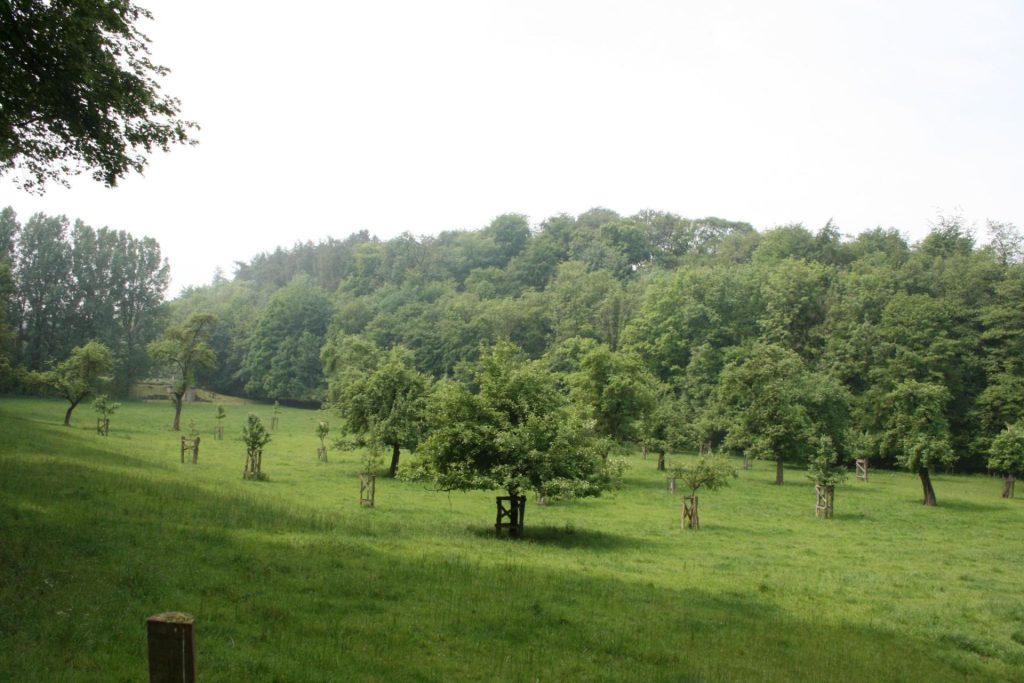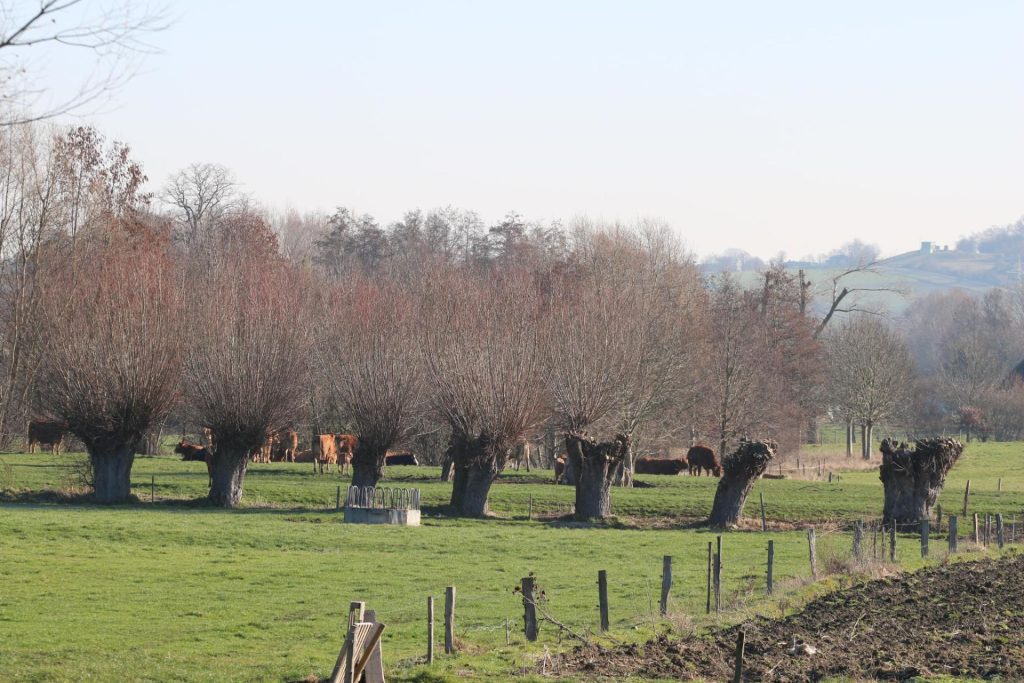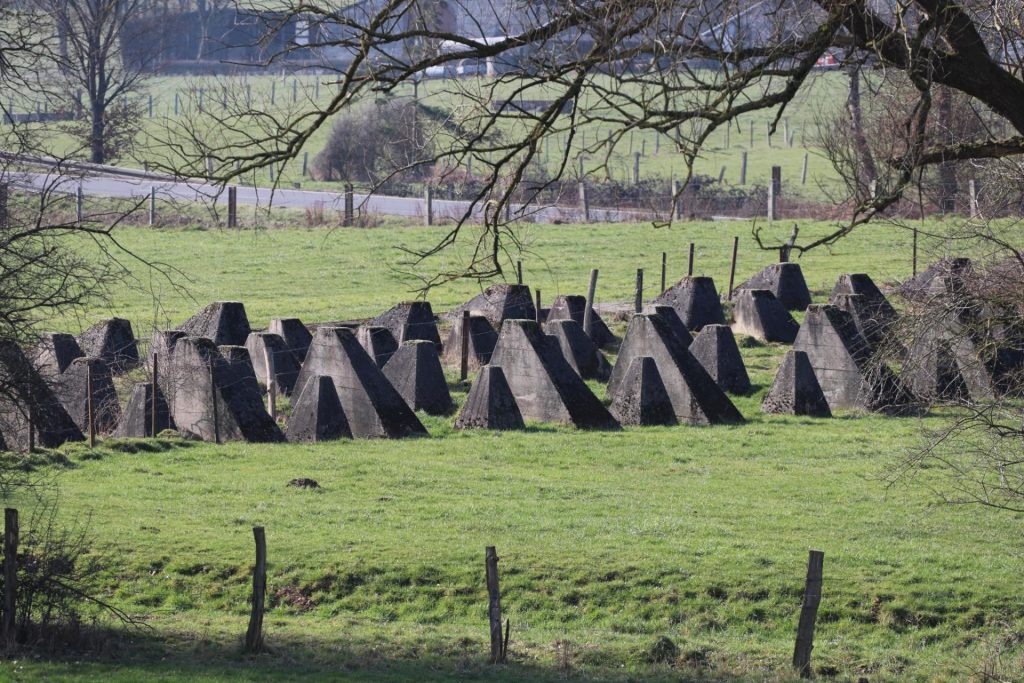© Carina Zacharias
Find more about Carina at her website, YouTube, and Instagram.
We meet at dusk, on a crisp and clear evening in early March. Mona knows the way, since only a few weeks earlier she has completed the same route. So I follow, first on foot and then on bicycle, as we find our way over muddy paths, across fields, and even into a graveyard, where red memorial candles flicker in the gathering darkness.
At each spot that has been marked on our map, we stop and pull out our phones. We play the track that we saved in preparation, of a little owl crying and hooting, and it echoes loudly in the falling dusk. After the track is finished, we stand still and listen.
Our trip is part of a bi-yearly survey organized by a local conservation station and carried out by volunteers like Mona and me. We are supposed to visit each of the assigned twenty-five spots three times between February and early April. They are all places near orchards and trees where the little owl had had territories in the past. What we hope to hear, when our track stops and silence falls, is an answering cry. Then we know that the little owl is still present. The data we gather helps to monitor the little owl’s population and informs protection methods. Like with many species, its population is dwindling due to a loss of habitat.

I live in Aachen, in western Germany, close to the border to both the Netherlands and Belgium. My federal state, North Rhine-Westphalia, is heavily urbanized. It has the highest population of all federal states in Germany as well as one of the most dense networks of traffic routes worldwide. The times when these lands were wilderness are long past. Instead, the landscape between urban areas is what we call a cultural landscape, meaning a landscape that has been shaped and transformed by humans for centuries.
The cultural landscape is characterized by agriculture and pastures. Beech, hawthorn, and hazel hedges line fields and roads, which wind their way through valleys and over hills. Single, large trees dot their way, spreading their branches and standing like guardians. Orchards, where apple, pear, and plum trees are scattered over meadows, are also very characteristic. And so are pollard trees, or in German Kopfbäume, which means head trees. These trees, oftentimes willows, have traditionally been pruned in a particular way: They are cut short, to an easily accessible height of roughly one to three meters, and the shoots that grow from the top are repeatedly cut. Originally, these were used for basket weaving. Today, of course, this pruning is only done for aesthetic purposes or ease of maintenance. As a result, however, the willows develop a thickened top, or overall a thicker trunk, from which long, thin branches reach skyward like hairs on an eerie tree-witch’s head.

It is this kind of landscape that we cycle through on our pursuit of the little owl. It is also this kind of landscape that local conservation organizations like the Nature and Biodiversity Conservation Union (NABU), for which we volunteer, seek to preserve. It might sound strange to readers from America or other parts of the world that conservationists work to protect biotopes and structures that are not, strictly speaking, natural, but human-made. However, this is one of the main focus points of conservation work in Central Europe. And the alternative is much, much worse.
The structures that I have been describing are centuries-old, and local species have adapted to them. Blackcaps, robins, tits, and many other birds find food and nesting places in the hedges and trees. Small mammals like hedgehogs, badgers, foxes, and dormice seek refuge there amongst the open acres and fields. Bats fly along the hedges catching insects. The latter feed on the blossoms of hedges and willows or of flowers growing at their feet. The little owl, which we have been trying to detect, is especially dependent on the orchards as its habitat.
But the world has changed since the times when picturesque fruit orchards could provide livelihoods. Nowadays, our fruit comes from big plantations and finds its way to our supermarkets from all over the world. Local agriculture has been industrialized, and small fields are tedious for the local farmers. So they are merged into bigger and bigger acres, making the harvesting with large machinery much more efficient but also rendering dividing hedges superfluous. Naturally, any tree that stands in the way has to go, too. Pesticides eradicate wildflowers and an overuse of fertilizer washes into our streams and groundwater and spreads throughout the landscape, threatening any herb species that relies on nutrient-poor soil. Meadows are mowed far too frequently for butterfly cocoons or other insects to develop and used so efficiently that not even a narrow strip of wildflowers is allowed along the edges. In short, the many structures and the habitats they provide grow less with every decade and our landscape is becoming cleaner and tidier—and less diverse.
Ironically, in this situation, a remnant of our darkest history is becoming an ally of conservation work. The so-called Westwall, in English known as the Siegfried Line, was built by Nazi Germany in the late 1930s. It was a 630 km long defensive line that ran along the western border of Germany and consisted of bunkers, tunnels, trenches, and tank traps. Some of these structures remain to this day, not least because they are very arduous and expensive to remove, making agricultural or other use of this particular stretch of land impossible. Some of the tank traps, for example, run clearly visible over pastures, but most of them are covered in shrubs, therein providing habitats for wild plants, food, and shelter for local wildlife and much needed corridors between forested areas. Funny, how nature can take something ugly and turn it into something beautiful, reminding us that not all changes are for the worse.

Mostly, however, the land use change is spreading and intensifying. The change is slow—one field, one tree or hedge at a time—and so subtle that the difference is hard to observe in only one lifetime. As a 29-year old, who spends her time mostly in the city, I would never have noticed. Instead, I learned about it in university, where I studied landscape ecology, and through my volunteer work for the NABU. In my experience, it’s only older generations with the hindsight of several decades and a perceptive eye for the nature surrounding us, who notice and remark on the changes in our landscape. Most young people would see a wide, mowed meadow with not a single wildflower, not a single bee buzzing in the air and think: “This is green, so it’s nature, how beautiful!” Shifting baselines are a real problem.
Nevertheless, public perception and opinions are shifting. For example, the worry about insects, especially bees, dying out has caught on and is spoken about a lot in German society. Raising this issue in public awareness is a huge success for conservationists. And lots more work is done, by professionals and volunteers alike, to preserve our landscape and its wildlife.
On the last spot of today’s survey, we wait for a long time. But all we hear is a nearby road. Alas, this evening, we haven’t heard a single answering cry. Nor did Mona hear one on her first round. But we are not the only ones participating in the survey, and other groups might be more successful. In the survey from two years ago, thirty territories could be located. And, after all, this was not the last time cycling in the dusk for us. For now, we mount our bicycles and make our way home. But we will be back, setting our phones on highest volume, sending out the cry of the little owl over fields and meadows.
Listening for an answer.
Carina Zacharias studied landscape ecology, sustainability and computer sciences and works as a software developer with a focus on environmental applications. She has published several novels and short stories and talks about all things bookish on her (German) YouTube channel.